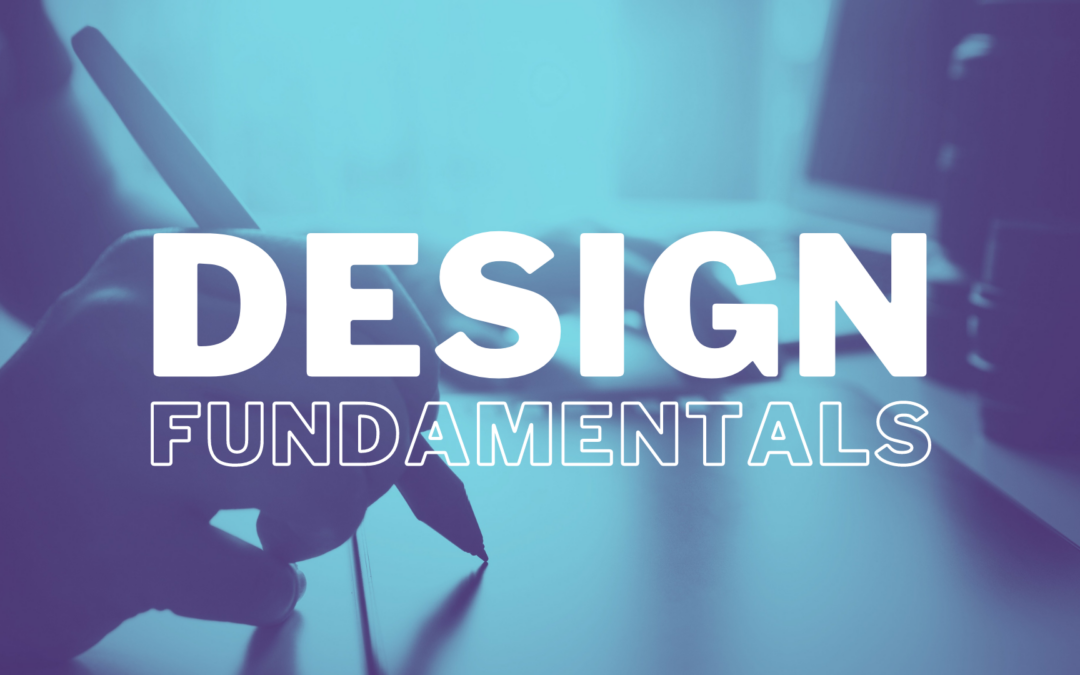You know that investing in your brand pays off, and you know that having a strong visual brand identity is crucial to this. But how do you go about crafting unique, memorable visuals? Keep reading to uncover the ten fundamentals of design that you need to include in all your graphic material – and get ready to dress (your brand) to impress.
1. Line
Let’s start with something as basic as it is vital: lines. When it comes to graphic design, a line is represented by two connected dots or points. Lines can help you divvy up your space as well as draw the attention of the viewer to a specific part of your design.
2. Shape
When lines include color and other types of boundaries, they become shapes – which can be either organic or geometric. Shapes enhance the interest and uniqueness of a piece of graphic design and are often used to emphasize a part of the page.
3. Color
Color is truly one of the essential fundamentals of design. So versatile and open to different uses, it allows graphic designers to explore many different possibilities and try out different combinations to elicit the reactions or feelings they are looking for.
With color, you can create moods, tell stories, and play around with combinations of different shades and gradients. Choosing your brand’s color palette is one of the most important aspects of crafting your brand identity, so ensure that you devote enough time to it – and that you prioritize this process over other brand-related ones.
4. Balance
When we say “balance”, it’s worth mentioning we don’t necessarily mean “harmony” – for which, in fact, we have created a separate section. Balance encompasses both symmetry and asymmetry, and it essentially gives a sense of structure and stability to your design.
You can think about balance as the physical weight of an object – except you are not dealing with physical objects, but with abstract elements of design, such as shapes, images, and text boxes.
Most contemporary creatives and artists seem to subscribe to the asymmetry school of balance, as it can be more thought-provoking and exciting. However, symmetry can still elicit a strong emotional response in your audience, so make sure that you don’t rule it out completely.
5. Harmony
Alex White, the famous author of “The Elements of Graphic Design”, defined harmony as “the main goal of graphic design”. The great thing about harmony is that it doesn’t follow a one-size-fits-all rulebook: it can vary massively from one piece of design to the next.
To achieve harmony, all you need is simply a sense of all the different design elements working well together and helping you to communicate exactly what you had set out to do.
6. Visual Hierarchy
Just like any other type of hierarchy, a visual hierarchy establishes which elements in your graphic design are most important, and which are secondary. You can achieve this in several ways: for example, you could use bold or large fonts or other highlighters, as well as place your key design element in the middle or at the top.
7. Texture
If you think that texture is an attribute that only applies to physical objects, then you might need to think again. In graphic design, texture is a crucial aspect as it helps you to create the immersive illusion of a 3D look and, by doing so, enhances feelings of engagement and emotional connection.
8. Contrast
As you might expect, contrast occurs when you have a strong, visible difference between two (or more) design elements. These, usually, are complete opposites, such as light and dark, big and small, vintage and contemporary, minimalist and maximalist, and so on. However, a skillful graphic designer should also be able to convey contrast when using elements that are not necessarily obvious opposites.
9. Negative Space
Do you think that a great, memorable piece of design is also one that makes use of all the available space? Well, you might be in for a bit of a surprise. When creating a design piece, you also need to be mindful of the so-called “negative space”.
Also known as “white space”, it refers to the parts of the design that are voluntarily left blank. Not many graphic designers take real advantage of negative space, but you can (and should) harness its potential when crafting your next piece. This design element, in fact, allows you to achieve a more unique, interesting, and unforgettable creation.
10. Typography
Talking about graphic design means also taking into consideration typography. This is another pillar of design, although you might feel like overlooking it because it doesn’t immediately convey a visual-rich message.
Words, nonetheless, are just as important as images in the world of design – and the way these words are presented is crucial. Choosing the right font, shape, and color for your text is, in fact, another essential aspect that allows you to build your unique brand identity.
Fundamentals of Design: The Takeaway
Every great piece of graphic design should incorporate at least the ten, fundamentals of design that we have listed and described in our quick guide.
By doing so, you will be able to craft the visual identity of your brand, helping your audience to recognize it amongst other brands and to associate your values, vision, and mission with it.
For even more help, tips, and resources on all things digital marketing, branding, and design, be sure to visit our blog or contact our team today.

